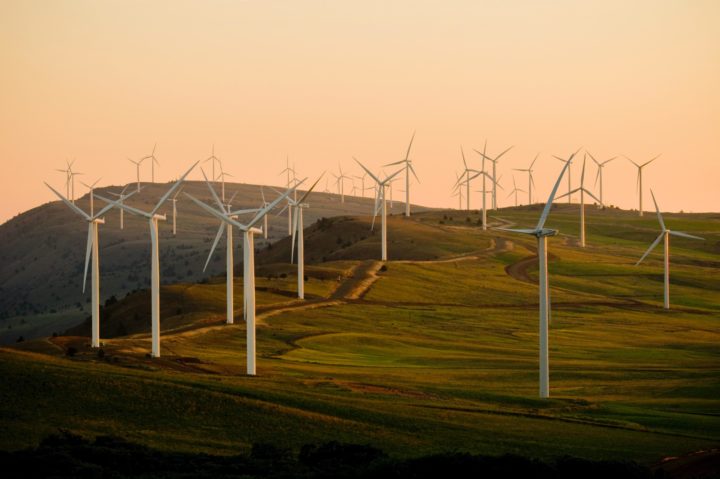COP27 - what can we expect?
With the next UN climate summit drawing close, we take a look at the likely focus for judging progress at COP27 in Egypt

By Gareth Redmond-King
@gredmond76Share
Last updated:
Remarkably, another climate COP is nearly upon us. Maybe it’s my age that makes time pass faster, so COP26 in Glasgow feels just a couple of months ago. On the other hand, 2022’s growing global crises can make it feel more like a couple of years ago.

Either way, we are now barely two months away from the next UN climate change summit. And whilst those global crises might seem to have distracted from the climate crisis, the Russian invasion of Ukraine and spiralling energy costs have also pushed decarbonisation up the agenda as a long-term solution not just to the climate crisis, shown most clearly by the EU’s revamped energy plans.
COP27, then, will kick off on 6th November, in Sharm El-Sheikh, when Egypt takes over the presidency from the UK.
Glasgow’s legacy
COP26 concluded with the Glasgow Climate Pact – an agreement which moved some issues on, whilst acknowledging insufficient progress on others. It continued to build momentum from the Paris Agreement and was thought to have been enough to keep 1.5°C alive – just.
It contained unprecedented commitments to end ‘inefficient’ fossil fuel subsidies’ and ‘phase down’ coal. COP26 also landed multi-lateral agreements between groups of nations to, amongst other things, slash methane emissions, stop deforestation, end financing for overseas fossil fuels, and speed the demise of the internal combustion engine.

But it registered little progress on the crucial issue of adapting to climate impacts, none on finance for losses and damage from climate impacts, and actively regretted the failure of wealthy nations to deliver on climate finance promises.
Arguably the most significant commitment was that made by all nations to come back before COP27 with enhanced emission-cutting pledges. Although the goal to keep warming to 1.5°C was re-affirmed by COP26, existing nationally-determined contributions (NDCs) are reckoned to leave us on track for catastrophic rises of between 2.4°C and 2.7°C.
Setting the scene for Sharm El-Sheikh
No global meeting in 2022 will happen in a vacuum where interconnected global crises of food, energy, and war are absent. But solutions to the climate crisis double as solutions to energy costs and shortages, and to threats to food supplies. And a global shift away from fossil fuels can only undermine the power and influence of rogue petro-states like Russia.
But the agenda at COP27 will principally be focused on climate change and solutions, scene-setting for which has been provided by the Intergovernmental Panel on Climate Change (IPCC) reports over the last year. Their sixth assessment report has updated the science of climate change, demonstrated that impacts are worse than expected and will outstrip our ability to adapt before long, but that we have the solutions we need to act in time.
With that backdrop, successful progress in Egypt will likely be judged across four core areas.
Mitigation – cutting emissions to keep warming to 1.5°C
As of August, whilst there has been no influx of new pledges, we have seen some significant ones. India pledged net zero emissions by 2070, in Glasgow, and has now set out plans for this decade. The new Australian government has returned to the international climate table with stronger targets. And Egypt, who could scarcely host COP without a decent NDC in place, have set out their climate plan. Additionally, in passing its biggest climate spending package ever, the US gives credibility to the NDC they submitted on their return to the international stage under Biden.
But Egyptian Minister, Rania Al Mashat, signalled that COP27 will be about “moving on from pledges, to implementation” saying the hosts “want to highlight what are the practical policies and practices – the processes that can actually push the pledges to bridge that gap” to action.
Whether that works may depend how far pledges have moved under the UK presidency, before COP27: the deadline for submissions to enable recalculating the cumulative impact of NDCs, is 23rd September. But it could serve to highlight where nations are surging ahead economically off the back of growing investment in decarbonisation (China, EU) and where some erstwhile leaders risk showing signs of slipping back on progress (UK).

Adaptation to climate impacts
The Paris Agreement commits to a ‘global goal on adaptation’ to climate change. COP26 established a two-year programme to define it. COP27 president-designate, Sameh Shoukry, will be expected to ensure this ‘Glasgow to Sharm El-Sheikh’ programme makes progress. That will include at least establishing shared understanding of the areas where action and funding for adapting to climate impacts are most needed.
The UN Economic Commission for Africa showed African nations already spend between 2% and 9% of GDP on adaptation – more, in some cases, than on critical public services. Progress at Glasgow included commitment to doubling adaptation finance by 2025. COP27 will be expected to produce a plan for delivering this, as well as for seeking political agreement to its being grant-based, rather than loan-based.
Climate finance
Wealthy nations promised, in 2009, to provide $100bn a year to developing nations by 2020. This has not been delivered, and may not be until 2023, with OECD calculations showing the total some $17bn short. Detailed assessment of what is included already shows a prevalence of loans, not grants.
The Glasgow Climate Pact “notes with deep regret” that the pledge has not been met, urging parties to get on with it; but they also need to agree increased levels beyond 2025. Success at COP27 will rely on more tangible progress to deliver the $100bn, and to move ahead on the new goal. The funding itself is crucial, as timescales to act shorten and the need to adapt grows. But delivery on promises made by wealthy nations is also important for developing nations’ confidence and trust in the process.

Loss and damage caused by climate change
At UN meetings in June, the Climate Vulnerable Forum (CVF) showed that 55 nations most exposed to climate impacts have incurred losses costing more than $500bn already. A Christian Aid assessment suggested the average GDP hit for the most vulnerable countries could reach 19% by 2050, and 64% by 2100 (at 2.9°C of warming).
Despite the best efforts of developing nations and civil society at COP26, the only progress was commitment to further dialogue. Wealthy nations, fearing finding themselves on the hook for unlimited financial liabilities long into the future, have slowed or actively blocked progress.
Expectations will be higher on this issue for progress at an African-hosted COP, even though the dialogue will not conclude until 2023. New and additional funding arrangements to support loss and damage costs are what is sought. Progress on that will be a litmus test for COP27 ‘success’ – not just in practical terms of what is needed but, as with climate finance, for those nations most affected to continue to have confidence in the COP process itself.
Sign up to our Road to Sharm El-Sheikh newsletter to get you up to speed on all the issues ahead of COP27, and then get daily updates from our team on the ground in November.

Share